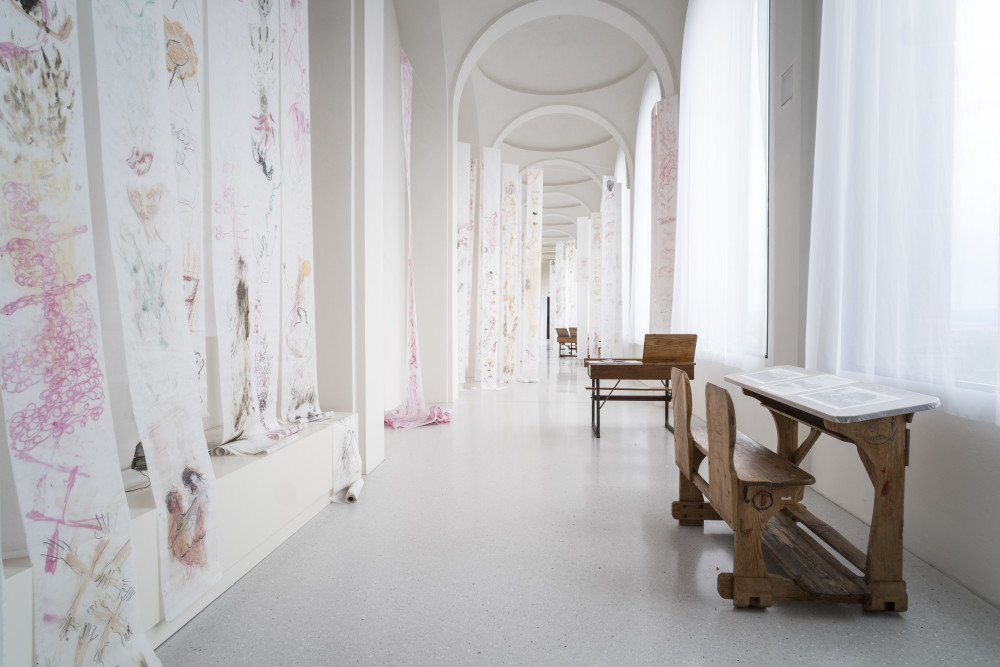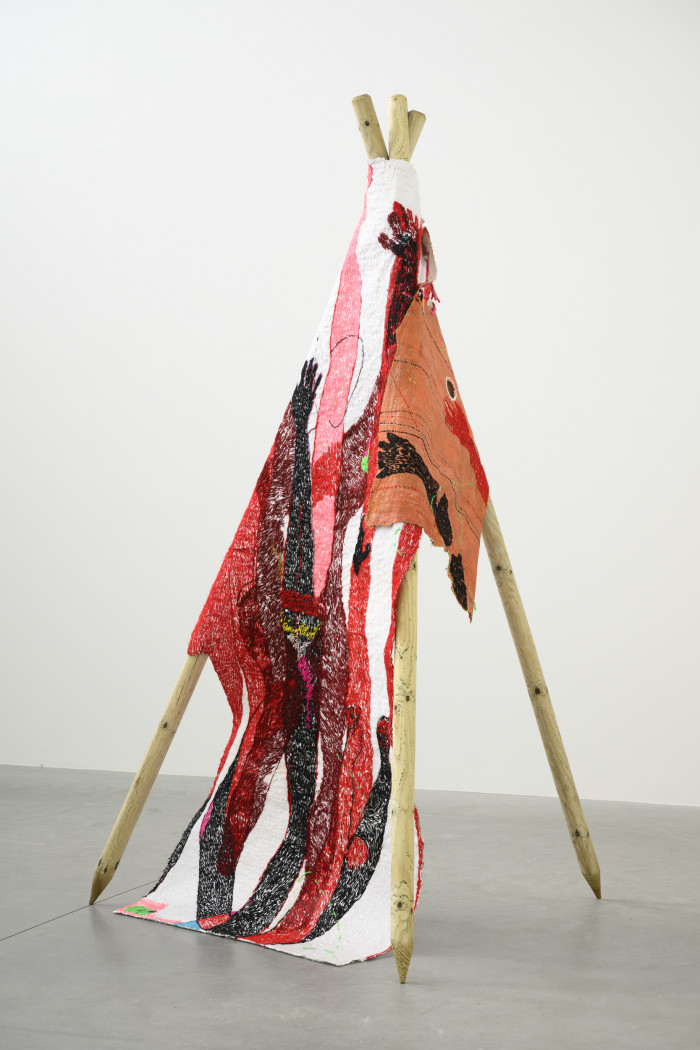The Missing Link. Dicolonisation Education by Mrs Smiling Stone
The Missing Link. Dicolonisation Education by Mrs Smiling Stone (2017) is a large-scale installation commissioned for documenta 14 in Kassel and Athens. It features numerous items including school desks and tables, drawings on transparent paper, photographs, music recordings, and videos around which visitors can freely wander.
The pupils who created the notebooks presented on the tables were invited to draw and write how they felt about the archival material. Meanwhile, students discussed the importance of historical and archival objects such as “Le Code Noir”—a French decree defining the conditions of slavery passed by King Louis XIV in 1685—as a part of our collective excavation of history. This process of collaborative thinking acknowledged how much the construction of human history needs to be reconsidered from a global viewpoint. All the contributions produced during the workshops revealed a new form of narrative against the dogmas of slavery, discrimination, and race ideology.
Gbaguidi also collaborated with the Münchner Stadtmuseum’s Puppet Theatre Collection to borrow ethnic caricatures, several museums in Kassel for the loan of ceramic shards and wooden toys, the Hector Pieterson Museum in Johannesburg for research including drawings and animal bone rubbings, and Dr. Peter Magubane’s photo archive. The installation results from collaborative workshops organised by the artist with a group of pupils from Kassel. Since its first exhibition in 2017, the installation or parts of it have been exhibited in “Congoville” at the Middelheim Museum (2021) and “BXL UNIVERSEL II: multi.plicity” at La Centrale Brussels (2021). Each iteration of the piece brings together local archive material and elements created during new workshops with local youth.
The photographs visible in the installation belong to the collections of the Royal Museum for Central Africa - Tervuren. They relate to education in the colonial times of the Belgian Congo, featuring missionaries occupying hierarchical positions. They are linked to one of the videos showing colonial propaganda taught at Antwerp University, a former colonial college active from 1920-1962. The video work Relink is a collage of various archive footage of performance art and videos from historical colonisation sites such as the Cradle of Humankind near Johannesburg and Delphi in Greece. They challenge the European concept of democracy.
The artist’s largest work to date, The Missing Link encompasses all the signature themes of her practice.
Gbaguidi calls herself a contemporary “griot”, someone who functions as an intermediary between individual memory and ancestral past. Her work transcribes collective traumas and memories from colonialism and postcolonialism into an artistic language. She draws attention to the way in which legacies of oppression are circumvented in official histories—and thus preserved. Her practice aims to counteract the process of forgetting by recontextualizing archives and histories. In The Missing Link, Gbaguidi examines the crucial role that education plays in shifting existing historical narratives by confronting and interpreting archives. The title refers to the role that the artist herself plays in the process of the systemic shift. She embodies the “missing link” that poetically reflects on the impact of past traumas.
The work was inspired by a visit to the Cradle of Humankind, the heritage site near Johannesburg where Black school students started a series of protests against apartheid in 1976. It triggered reflection on the insufficiency of the educational system. The so-called “Mrs Smiling Stone” is a fictitious figure who symbolises a new era of education and teaching.
In the work, collective knowledge is embodied by the school desks and notebooks upon which the pupils have written and drawn on together. While the use of tracing paper calls out the need for transparency, the colourful drawings made out of pencils and lipstick are the materialisation of a healing process that the artist undertakes throughout her practice. They are a vivid expression of the primary emotions of children.

